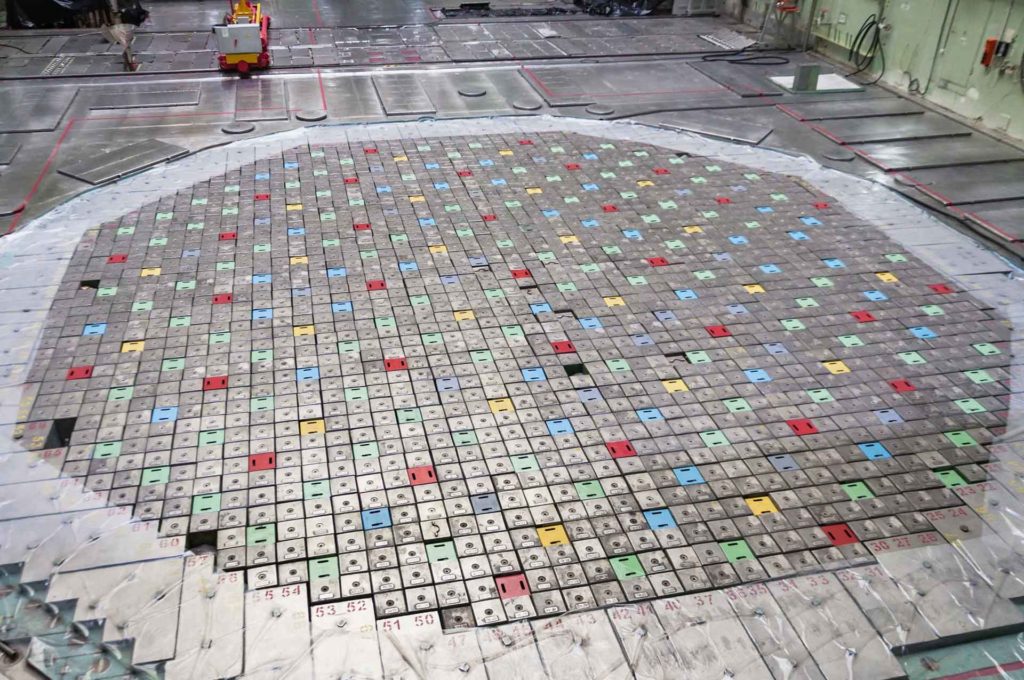Boron at Fukushima
Boron at Fukushima: In 2011 a severe nuclear meltdown occurred in Fukushima at the atomic reactor on the coast of Japan. Authorities resorted to spreading a boron compound on the site to halt the spread of radiation. How did boron help mitigate radiation and meltdown at the time? How does it also act as an inhibitor in the nuclear rods themselves?

Boron at Fukushima
Meltdown and Boron at Fukushima
An enormous tsunami wave struck on March 11 2011, at 14:46 local time.. Fukushima’s reactor melted down. This undersea megathrust earthquake with a magnitude of 9.0–9.1 (Mw) occurred 72 km (45 mi) east of the Oshika Peninsula in the Tohoku region, lasting approximately six minutes and causing a tsunami. Some call it the “Great East Japan Earthquake”. In Japan, the disaster is commonly known as 3.11.
Boron – Anti-radiation
Boron is widely used in nuclear reactors for shielding, control, and safety. Boron absorbs neutron radiation during fission and controls the reaction’s rate, slowing or stopping it without itself fissioning. In addition to being a clean, reliable, and sustainable fuel for modern living, borons contribute to keeping nuclear power safe.
Plant operators can adjust the quantity of boric acid in the reaction environment by dissolving high-purity boric acid in the primary cooling circuit, which controls the nuclear reaction rate and its energy production. The use of borates as corrosion inhibitors is possible in some situations where criticality is reached, as seen in Fukushima.
What Happened that Day
The worst-case scenario at a nuclear plant is a breach of the containment vessel. There was indeed a breach of the containment vessel. At 11:01 on March 14, there was a catastrophic explosion in the upper part of the reactor building. It was caused by a leak in the containment boundary of the plant.
A tsunami of 14 meters (46 ft) high followed the earthquake, it swept over the plant’s seawall, flooding parts of reactors 1–4. The flooding caused the emergency generators to fail and the circulating pumps to lose power. Between 12 and 15 March, the resultant loss of core cooling caused three nuclear meltdowns, three hydrogen explosions, and the release of radioactive contamination in Units 1, 2, and 3.
The active reactors immediately shut down the fission reactions that generate power after the earthquake. The reactors’ electricity was cut off, and the emergency diesel generators were automatically turned on. Coolant was circulated through the reactor cores by pumps powered by electricity. Even after fission has ended, residual decay heat continues to be created and removed by this continuous circulation.
Due to this decay heat from the spent fuel rods, the spent fuel pool in previously shut down Reactor 4 increased in temperature on March 15 but did not cool down sufficiently and exposed itself. The situation resulted in mitigation measures, which included radiation released into the atmosphere. This forced the government to declare a 20 km radius evacuation zone around the plant.
Boron Stops a Nuclear Meltdown
In the wake of the April earthquake and tsunami in Japan, officials from the Tokyo Electric Power Company (TEPCO) began injecting seawater laced with Boron into the reactor’s primary containment vessel. Boron is an excellent absorber of neutrons in nuclear reactions.
Seawater corrodes the fuel elements, but Boron is not corrosive and is a safe, last-ditch-cooling method. The uranium-210-boron mix absorbed neutrons and stopped the Fukushima reactor’s core from reaching this critical state. The use of Boron to cool the reactors was condidered a safer option. Engineers pumped seawater laced with Boron into two of the three reactors of the Fukushima No. 1 nuclear power plant.
Research into Boron at Fukushima
Decommissioning of the plant is still ongoing after ten years. There are four types of decommissioning work being conducted at Fukushima. Radiation materials must be encapsulated, cleaned, cooled, and stored. The Japanese government is considering using Boron to decommission Fukushima.
In a study published in the World Nuclear News Update, the scientists showed that water injection was safe, but the water needed repumping several times.
The Japanese government reported that the situation at Fukushima was worse than a meltdown. The IAEA, the International Atomic Energy Agency, released an updated log on the accident. The IAEA has also stated the reliability of the system. Aside from the reliability and safety of the nuclear plant, the new research shows that Boron is an essential component of FDNPP control rods.
The scientific community is still trying to fully understand the radiation levels at Fukushima. Researchers continue to study the amount of Boron released in the spent fuel pool. These studies are essential for the decontamination of the local area. One model control rod of the damaged units was exposed to Boron to gauge the extent of dampening of the nuclear reaction. Researchers used Boron carbide control rods to determine the distribution of the Boron.
Researchers continue to investigate the effects of radiation on the Fukushima area. The study’s authors, led by Prof. Rod Ewing of Stanford University, are urging the Japanese government to do more to protect the region. The findings of this paper are crucial for decontamination operations at the plant and will enable a more thorough understanding of the meltdown conditions.
Chernobyl: Boron Covers Nuclear Site

A large fire raged in the ruins of the No. 4 reactors of the Chernobyl Nuclear Power Plant in 1986. A hospital in the nearby town of Pripyat was overrun with radiation victims. Deadly radioactive dust had drifted all the way out of the Soviet Union and into Sweden. The air above the reactor glowed where the uranium core had become exposed. And the people leading the disaster response decided to dump thousands of tons of sand and boron on the core.
To reduce radiation risk and seal the site, sand and Boron were dumped at the Chernobyl site. The Chernobyl mixture also included clay and lead. The deadly smoke plumes were contained since the sand covered the exposed reactor. Boron was able to arrest the nuclear reaction.
A nuclear chain reaction means gathering radioactive isotopes close enough so the neutrons, shoot into space, hit another atomic nucleus and split it. Due to the structure of the nucleus, there is a certain probability that an isotope will absorb a neutron when it interacts with a neutron.
Boron tends to absorb neutrons and then instantly split apart. However, uranium, specifically uranium-235, tends to break apart immediately after taking in a neutron. Hence, Boron is a good anti-radiation weapon to have for nuclear emergencies.





